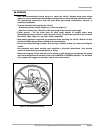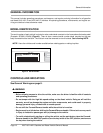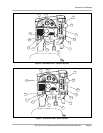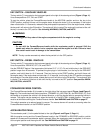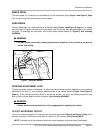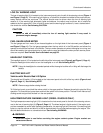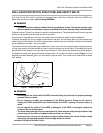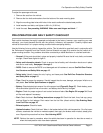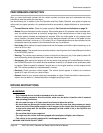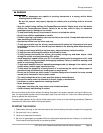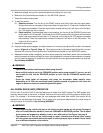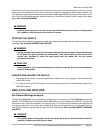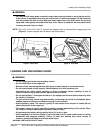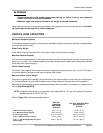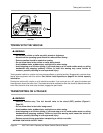
Pre-Operation and Daily Safety Checklist
2007 HUV 4421 Gasoline and Diesel Vehicle Owner’s Manual Page 17
To adjust the passenger-side seat
1. Remove the seat from the vehicle.
2. Remove the four bolts and washers from the bottom of the seat mounting plate.
3. Align the mounting plate holes with holes in the seat to achieve the desired seat position.
4. Install washers and bolts, and tighten to 96 in-lb (10.8 N·m).
5. Install the seat. See preceding WARNING “Make sure seat hinges and latch...”
PRE-OPERATION AND DAILY SAFETY CHECKLIST
Each vehicle has been thoroughly inspected and adjusted at the factory; however, upon receiving your new
vehicle(s), you should become familiar with the controls, indicators, and operation. Carefully inspect each
vehicle to ensure that it is in proper working condition before accepting delivery.
Use the following list as a guide to inspect the vehicle. This list should be used daily and in conjunction with
the Performance Inspection and the Periodic Service Schedule on page 29 to ensure that the vehicle is in
proper working condition. Any problems should be corrected by a dealer/distributor or a trained technician.
• General: All the parts should be in place and properly installed. Be sure that all nuts, bolts, and screws
are tight. Check hose clights for tight fit.
• Safety and information decals: Check to ensure that all safety and information decals are in place
and can be read easily. See pages 4 through 5.
•ROPS: Check to ensure the ROPS is not damaged and all hardware is secure. See Roll-Over Protec-
tive Structure and Safety Belts on page 15.
• Safety belts: Visually inspect for cuts, fraying, and loose parts. See Roll-Over Protective Structure
and Safety Belts on page 15.
• Tires: Check for proper tire pressure. Visually inspect tires for wear, damage, and proper inflation on a
daily basis. See Vehicle Specifications on page 51.
• Battery: Check electrolyte to ensure it is at the proper level (Figure 40, Page 47). Check battery posts.
Wires should be tight and free of corrosion, and battery should be fully charged.
• Engine: Check for proper engine oil and coolant levels and leaks. See Engine Oil on page 34. Check
air filter and replace if necessary.
• Fuel: Check fuel level. See Fueling Instructions on page 43. Check fuel tank, lines, fuel cap, pump,
and fuel filters for fuel leakage. Drain water from the fuel filter (diesel vehicle). See Draining Water
from Fuel Filter on page 45.
• Exhaust system: Check for leaks.
• Hydraulic brakes: Check fluid level. Wear in the brakes before initial vehicle operation. On a flat, open
surface, accelerate the vehicle to moderate speed, then apply the brakes under modest, steady pres-
sure. Repeat this procedure five times. See following NOTE.
NOTE: Perform the wear-in procedure when the vehicle has been in operation for less than a week, or
when the brake pads or rotor have been replaced.



